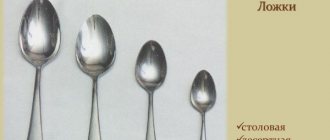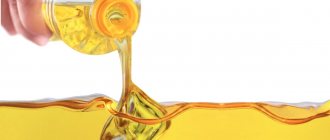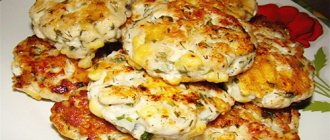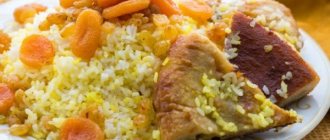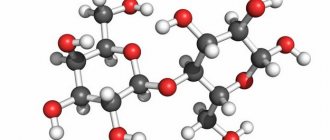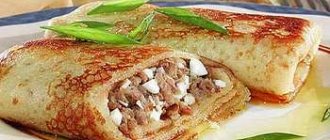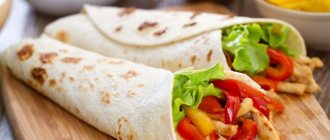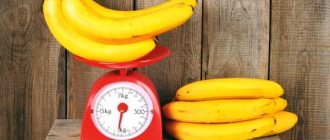Calorie content of honey: how many calories are in a spoon How many calories are in a spoon of honey, what is the calorie content in 1 teaspoon or tablespoon; when consuming it, calories are burned or fat is accumulated - for those people who are watching their figure, the question of the calorie content of this sweetener is very relevant. The calorie content of honey per 100 grams ranges from 300 to 450 Kcal, depending on the variety.
This is a natural product produced by bees, which collect nectar from honey flowers and process the resulting cane sugar with saliva in their crop. This mixture is then separated into honeycombs for further maturation into the final product.
How much does honey weigh?
Honey comes in different consistencies and thicknesses. For example, a thick product that has already been candied will weigh less than liquid nectar.
Adds weight and moisture contained in the treat:
- collected in dry summer, in the absence of precipitation, it contains less than 15%! in (MISSING) lag;
- in the rainy season the amount of moisture will increase to 25%! and (MISSING) higher.
Humidity also depends on the variety:
- honeydew is drier and thicker, it contains more natural glue than water. This variety is the earliest to be candied;
- a liquid variety that is rarely seen candied because it contains a lot of water is the acacia product.
The average moisture content is 18%!/(MISSING)100 g of product.
Also find out what vitamins are contained in honey.
In one glass
The weight will depend on the thickness of the walls of the glass: the thinner the walls, the greater the volume and, accordingly, the weight. For example:
- a faceted glass holds up to 250 g;
- thin-walled of the same shape and size up to 330 g.
In one jar
Each product has its own specific gravity; one liter of a quality product weighs approximately 1.44 kg. For ease of calculation when converting liters to kilograms, this figure should be rounded to 1.5 kg. In order to convert one measure of weight to another, you need to multiply the desired volume by 1.5.
Based on the data obtained, it is easy to make calculations presented for convenience in the table:
| Can volume in liters | Honey weight in kg |
| 0,5 | 0,75 |
| 0,75 | 1,125 |
| 1,0 | 1,5 |
| 1,5 | 2,25 |
| 2,0 | 3 |
| 3,0 | 4,5 |
What does it depend on
Discussions about the nutritional value of honey and how many calories are in honey have been going on for a long time. The value is still heterogeneous; it has a certain dependence on a number of factors:
- Geography, place where bees collected honey
- Honey plant, the quality of its nectar
- Weather conditions in which the collection was carried out
- Climate
- Presence of other plants
- The structure of the soil where honey plants grow.
When collecting honey, it is necessary to take into account all factors that influence the quality of the product; the nutritional value is affected by the time of year and weather. It should be remembered that the less water in honey, the more carbohydrates it contains.
How to lose weight with honey?
Despite the high calorie content of honey (it is higher in calories than sugar), it contains such a large amount of amino acids, vitamins and minerals that, taken together, they effectively help fight excess weight. You could even say that honey is the only healthy sweet for those losing weight.
Many women will say that sweet foods help them cope with stress, so how can you lose weight? This is precisely why honey, which is quite high in calories, can become an indispensable product for those losing weight. Even ancient Indian healers recommended it for the treatment of obesity.
How many calories does bee honey have?
Calories are small and harmful creatures that can ruin the life, mood and self-esteem of any woman. Undoubtedly, in order to maintain a figure in good shape, you need to tirelessly monitor your diet. Let's figure out what is best to eat during a diet if you want something sweet?
Depending on the variety, the energy value of the bee product also differs. It's no secret that the calorie content of honey is in no way inferior to bread, condensed milk, beluga and beef.
Calorie content: 320 kcal; Fat: 0 g; Carbohydrates: 80.2 g; Proteins: 0.4 g.
The linden variety, as well as other flower species: sunflower, buckwheat, etc., contain no more than 380 Kcal per 100 grams, but the dark and tart meadow varieties have higher values, which can reach 415 Kcal. Despite the fact that the calorie content is simply off the charts, do not forget that all of it relates to the glucose contained as a result of the work of little bees, and not to sugar.
In 1 tsp.
One teaspoon can hold up to 8 grams of nectar. This amount of substance will contain 30 Kcal. There will be slightly more calories in a tablespoon than in a teaspoon, because it is larger in volume!
In Art. l.
A tablespoon can hold as much as 17 grams of bee nectar. According to rough estimates, the calorie content in this cutlery is 56 Kcal.
In 100 gr.
As we have already said, 100 grams of bee products can contain from 350 to 420 Kcal. This directly depends on the chosen variety of medicinal delicacy.
Harm of honey
Unfortunately, even such a useful product can be harmful. Let's see in what situations it can harm the body:
- If you are hypersensitive to allergens, honey should be consumed with caution. Otherwise, nausea, dizziness, itching, etc. may occur.
- When heated (above 60 degrees), a toxic substance is formed in honey that can harm the digestive tract.
- Honey increases the risk of tooth decay because it sticks to teeth. Therefore, after taking the product, it is recommended to rinse your mouth with warm water.
- When consuming honey in large quantities, the risk of developing obesity and type 2 diabetes increases.
To avoid negative consequences, it is recommended to eat no more than 50 grams of this tasty and natural product per day. This is approximately 4 teaspoons of honey.
ABC RECOMMENDS
How many calories are in an apple: table by varieties with BJU
Where are there more calories - in sugar or honey: comparison of the calorie content of honey and sugar
It is known that honey has a fairly high sweetness. And many are interested in the question, what is more nutritious – honey or regular sugar? Both products compared contain fructose and glucose.
But sweetness is provided by different components:
- sugar - sucrose
- bee honey - fructose
This fact affects the energy and nutritional value. So, the calorie content of 100 g of the described sweets is as follows:
- sugar – 390-400 kcal
- honey – 304-415 kcal
However, if you compare the number of calories contained in a teaspoon, the picture will look different:
- sugar – 19 kcal
- honey – 26 kcal
Honey or sugar
This is due to the fact that the density of bee nectar is higher than sugar. And the spoon holds a larger volume of honey. As you can see, the calorie content of honey and sugar is approximately the same. However, the choice in favor of a beekeeping product should be made due to the following factors:
- Bee nectar has a sweeter taste. Therefore, to give dishes or drinks a certain degree of sweetness, on average, approximately 2 times less honey is required than sugar. Thus, our body will receive fewer calories.
- Due to the fact that honey is an easily digestible product, the calories it contains are absorbed by our body much faster than those contained in sugar.
- According to nutritionists, the daily sugar intake for a person is 30 g, or 3-4 tsp. While bee honey can be eaten up to 100 g per day without harm to yourself (for children up to 50 g)
- By consuming this delicacy, you bring great benefits to your health, enriching your body with a whole range of valuable healing components
- The natural product in question helps speed up metabolism, which affects calorie burning
- It is known that the higher the glycemic index (GI) of a product, the more likely it is to gain excess weight. The GI of honey is lower than that of sugar
- When we consume sugar, our intestines have to break down sucrose into fructose and glucose before they enter the bloodstream. At the same time, the pancreas works in an enhanced mode to produce insulin, which has an adverse effect on the body
Is it possible to give honey to children under one year old?
Chemical composition
The main composition of nectar consists of fructose (39%), glucose (36%), water, polysaccharides, sucrose, ash, organic acids and other substances (25%).
This is interesting: Linden honey contains more than 400 substances and ash components, the number of which is equal to the number of chemical elements in human blood.
The main microelements contained in bee products are:
- fluorine;
- manganese;
- zinc;
- chromium;
- nickel;
- copper;
- salts of iron, iodine, sodium, phosphorus and calcium.
Linden honey is rich in vitamin C (ascorbic acid), which is why it is so popular for inflammatory processes and colds. It also contains vitamins: K, E, PP, group B and some others.
Linden honey differs from other varieties of honey in its high maltose content, which explains its sugary-sweet taste. This substance is formed in honey during its ripening; the more mature the natural product, the higher the percentage of maltose in it. For the body, this sweet substance is an easily digestible source of energy; it is especially useful for the brain during intense intellectual stress (exams, defense of diplomas and dissertations, scientific research, etc.).
For comparison, mature linden honey contains 4 - 6% maltose, white acacia honey - 2.5 - 7.5%, and sunflower honey only 0.8 - 2.9%.
The composition of linden honey includes enzymes, organic acids and aromatic substances, which give the natural product its individual characteristics. Through chemical analysis, thiamine, riboflavin, pyridoxine and biotin were found in linden nectar.
Calories per spoon
It is much more interesting to determine how many calories are in a tablespoon of honey or in one teaspoon. In order to determine the calorie content of honey in 1 spoon, one should proceed from the total energy value per 100 grams of product. For example, if light varieties of delicacy contain about 380 kcal, and a teaspoon contains 7–8 g, then the calorie content of honey in a teaspoon will be from 25 to 30 kcal.
One tablespoon holds about 10 g of product, so the number of kilocalories in it ranges from 30 to 35. Such calculations were made for a level spoon of honey. If the additional condition is added that the spoon is heaped, the calorie content increases, namely:
- Bee honey, calorie content 1 tsp. with a slide – 33 kcal;
- honey, kcal in 1 tbsp. with a slide – 73 kcal.
How to choose linden honey
There are several ways to determine the naturalness of honey when purchasing:
- Dissolve honey in hot water or tea: if there is no sediment left and the color changes slightly, it is good honey;
- drop a little honey on the paper; if wet marks remain on it, the honey is not natural;
- if the honey does not wrap around a spoon like caramel, but drips off, this is a sign of a fake;
- the color should be uniform; if there are inclusions, such honey is not recommended for purchase.
It is very important to eat natural honey
In addition, you need to choose linden honey based on its light yellow color and its unique aroma.
Read: What foods contain silicon, how is the microelement absorbed?
Linden honey is useful for almost every person; you just need to dose it in doses and immediately remove it from the diet if an allergy or intolerance occurs. In addition, special attention should be paid to its correct selection and further storage so that all the healing properties are preserved in it.
You can learn more about the benefits of honey from the video.
https://www.youtube.com/watch?v=T94SHw2Iy3s
Read along with this article:
- Should you take honey before bed?
- Buckwheat honey: properties and beneficial use
- What vitamins in lemon help maintain beauty and...
- Horse sorrel: medicinal properties, prevention and treatment of diseases
- How many calories are in walnuts and what are they good for?
- The beneficial properties of semolina, its calorie content, secrets...
- Chemical composition of peanuts, beneficial properties for adults and children
- What are the benefits of bananas for the health, youth and beauty of women?
- Goji berries - calories, beneficial properties
Calorie content
There are many types of propolis, each of which has its own taste, color, composition, nutritional value and nutritional value. Depending on the variety, honey will contain different calories.
- the average calorie content of honey in 1 level teaspoon is 32 kcal, thick candied honey with a slide is 45 kcal;
- calorie content of 1 tablespoon of honey without a slide is 108 kcal, with a slide - 154 kcal.
Among the popular varieties, the most high-calorie varieties are homemade linden (black) and honeycomb - 327 and 323 kcal per 100 g.
Calories in buckwheat and flower honey are around 300 kcal/100g.
The benefits of linden honey
Linden honey helps with colds and sore throats
Many lovers of linden honey try to eat it as quickly as possible to avoid the sugaring process. This occurs 4-6 months after honey collection, depending on storage conditions. But all vitamins and microelements remain in its composition, so you don’t have to worry about the loss of its qualities.
The healing properties of linden honey are very wide:
- It has anti-inflammatory and antibacterial properties. It is an excellent prevention and one of the methods of treating colds and flu. Linden honey is the first thing eaten to get rid of cough. In addition, it can be used as a natural antipyretic.
- Useful and indicated for gastrointestinal diseases. Honey relieves inflammation, promotes digestion, copes with dysbiosis and normalizes intestinal function.
- Linden honey is the first aid for strengthening the cardiovascular system; it gives elasticity to the walls of blood vessels, breaks down atherosclerotic plaques, lowers blood pressure and helps strengthen the heart muscle.
- Replacing sugar with linden honey reduces the amount of cholesterol in the blood.
- It is also useful for the nervous system. Honey is an excellent remedy for stress, has a calming effect, and helps those suffering from insomnia.
- Has a special effect on women's health. Linden honey is especially indicated during pregnancy to boost immunity and during menopause to reduce hot flashes and relieve other symptoms of menopause.
- For men, linden honey helps cope with problems of the genitourinary system and relieve inflammation in the kidneys.
- Linden honey is a universal remedy for raising and strengthening the immune system.
- Due to its wound-healing properties, it is often used for burns, eczema and wounds.
- Helps restore the body after emotional and mental fatigue.
- Linden honey is used when entering and exiting therapeutic fasting, and is also introduced into the diet in the postoperative period.
- Helps in the treatment of many lung diseases.
Read: Obesity and its classification, possible complications and treatment methods
In both traditional and folk medicine, the medicinal properties of linden honey are beyond doubt. It is used as the basis for various tinctures, rubs, cosmetics and medicines.
Benefits and calories
This sweet product and its properties have been known since ancient times . And now they breed bees and collect honey on farms, huge farms, and their own apiaries, just as they did in ancient times.
The product is a thick, viscous mass, most often transparent, which crystallizes after some time. Its taste is very sweet, cloying, the smell is pleasant with a specific aroma. Taste, color and smell depend on the species and flowers.
What colors are there:
- White almost transparent with a slight yellowish tint;
- Yellow;
- Light brown;
- Dark brown
This delicious product contains a large number of useful substances - vitamins B, C, H and PP. It contains almost the entire periodic table , micro- and macroelements: potassium, calcium, magnesium, zinc, selenium, iron, chlorine and sulfur, chromium and fluorine, cobalt, silicon, nickel, aluminum, nicotinic acid. Thanks to these vitamins and minerals, honey has a general healing and strengthening effect on body functions.
Honey also , which keep you alert and give you energy.
The presence of iron and manganese in honey increases hemoglobin levels and helps blood cells recover faster. The good thing about it is that it is completely absorbed by the body, releasing all the beneficial substances.
How many grams of honey are contained in 1 spoon?
One of the first measures in the kitchen is a spoon, a teaspoon or a table spoon. Often in recipes, for convenience, the dosage of components is indicated in spoons, but not always. Therefore, it is advisable to know how to convert grams into spoons and measure the ingredient correctly.
Did you know? The ability of honey to retain its qualities for thousands of years was confirmed by archaeologists during excavations of the tomb of Tutankhamun. A vessel with nectar that retained its taste was found in the burial room.
Dining room
There are different ways to scoop a treat from a jar. Therefore, you need to consider the weight in the device with and without a slide.
Weight in 1 tbsp. l. in grams:
- with a slide -34-37;
- without slide -30-33.
Tea room
Small spoons are usually used to measure nectar for cosmetic recipes.
Product weight in 1 tsp. in grams:
- with a slide -14-19;
- without a slide - 9-12.
In the absence of scales, you can determine the dosage of the product using simple mathematical operations and cutlery - spoons.
Important! The measurement error, depending on the variety and consistency, will be from 5 to 10%!
For light weight it is better to use a tea room, otherwise a dining room:
- 50 g - 1 tsp measure is used for calculation. without a slide in grams, we get the following - 50/9 = 5.5 liters;
- 100 g - 100/9 (1 tsp) = 9 l;
- 150 g - then it is more convenient to take 1 tbsp as a measure. l. without a slide in grams -150/30 = 5 l.;
- 200 g - 200/30 = 6.6 l.;
- 250 g - 250/30 = 8.4 l.
Thus, 50 g of nectar is 5.5 tea spoons, and 250 g corresponds to 8.5 tablespoons.
How many calories are in a teaspoon of coffee. Nutritional components included in instant coffee
Instant coffee powder contains approximately 40 g of carbohydrates, 12 g of proteins, 0.5 g of fat per 100 grams of product. The energy value averages 240 kcal and is determined mainly by mono and polysaccharides (76%), to a lesser extent by proteins (22%) and to a small extent by fats (2%). Of course, 100 g of instant coffee is not drunk in one day, so it is important to know the calorie content per 100 grams of the finished product - a drink prepared with water.
After diluting the dry product with water, the energy value of coffee will depend on its concentration. Typically, no more than a spoonful of coffee powder is added to a cup. Therefore, the final result will be the calorie content in 1 teaspoon, and this is precisely the point that worries those who want to drink coffee while following a diet.
The answer to this can be given approximately, since different types of coffee are characterized by differences in density and chemical composition. One spoon without a slide holds about 3-4 g of coffee, with a spoon - approximately 6 g.
It is easy to calculate, knowing the calorie content of one hundred grams of instant coffee, that the energy value of a teaspoon of the product will be from 7 to 14 kcal.
The US Department of Agriculture provided data on the energy value of products: according to this information, 100 grams of instant coffee prepared with water without sugar contains only 2 kcal. This amount is so small that it has virtually no effect on the recommended daily caloric intake of foods. But we are talking about regular instant coffee without sugar, cream and other additives, which most often determine the energy value of the drink.
Calorie content of honey
Natural honey varieties are conventionally divided into highly nutritious and moderately nutritious types. The division is quite arbitrary; no one can give exact figures due to variable factors affecting honey collection. The carbohydrates present in bee nectar can be compared to sugar from beets; their value is 398 kcal. The significant difference lies in the percentage of moisture, its normal value is 15-21 percent! A low-quality product, of course, can show completely different results, but it should not be on sale.
Bees collect various types of honey from various plants, differing in energy value.
Honey and water for weight loss
Calorie content of monofloral varieties
- Minimum calorie content, 300 – 310. Varieties: cornflower, pumpkin, buckwheat, phacelia, citrus fruits, rapeseed, mustard, heather and many others.
- Average values, 311 - 320. Varieties: sunflower, sainfoin and camel thorn
- Maximum values from 321. Unique delicious varieties, such as: acacia, linden, akkurai, dimorphant, black maple.
Beneficial features
Honey contains a considerable amount of potassium, which helps destroy bacteria. Thanks to it, the product creates an environment in which they simply cannot survive. Bacteria that multiply in moisture die, as potassium deprives them of a humid environment. Nicotinic acid, which is also present in honey, helps dilate blood vessels and cleanse the body of cholesterol. In addition, it has a lot of advantages over other products with similar composition:
- it is extremely easily and quickly absorbed;
- has a calming and relaxing effect;
- may cause a laxative effect to some extent;
- does not irritate the digestive tract;
- has a therapeutic effect on the body;
- relieves pain;
- easily passes through the kidneys.
In modern megacities, stress and nervous disorders are becoming more and more common, and therefore pharmacies purchase a lot of medicines that calm the nervous system, but have many side effects. Therefore, honey is one of the best ways to relieve nervous tension, because it does not contain harmful substances and is a natural product.
It is also recommended for use for arthritis and cough.
Sugar or bee product
If this sweetness is not harmful during a diet and is quickly absorbed by the body, then the question arises, what is more nutritious, honey or sugar?
To this we can safely answer that the calorie content of a healthy treat is much lower than sugar. For example, in tsp. The beekeeping product contains about 30 kcal, and sugar - about 20. At first glance, it seems that sugar has less calories, but this is not so. In this case, this situation arises due to the fact that a spoonful of sugar contains much less than bee product. As already mentioned, per 100 grams of sweetness there are from 320 to 380 kcal, and sugar contains about 450 kcal.
It is worth considering that when it enters the body, the sweetness is absorbed quite quickly without being deposited in the fat layer. Sugar will take much longer to digest by the body, cause addiction, provoke a large appetite, and be deposited in fatty layers. In addition, sugar causes drowsiness and damages teeth.
Of course, such a delicacy also contains sugar, but it contains fructose and glucose, which are quickly broken down by organisms, and in addition, bring great benefits to humans.
When choosing between sticky sweetness and ordinary sugar, you should give your preference to honey, since it is recommended to eat it with proper nutrition, but in small quantities; the delicacy will not only bring pleasure when eaten, but will also “reward” with a large number of useful elements.
